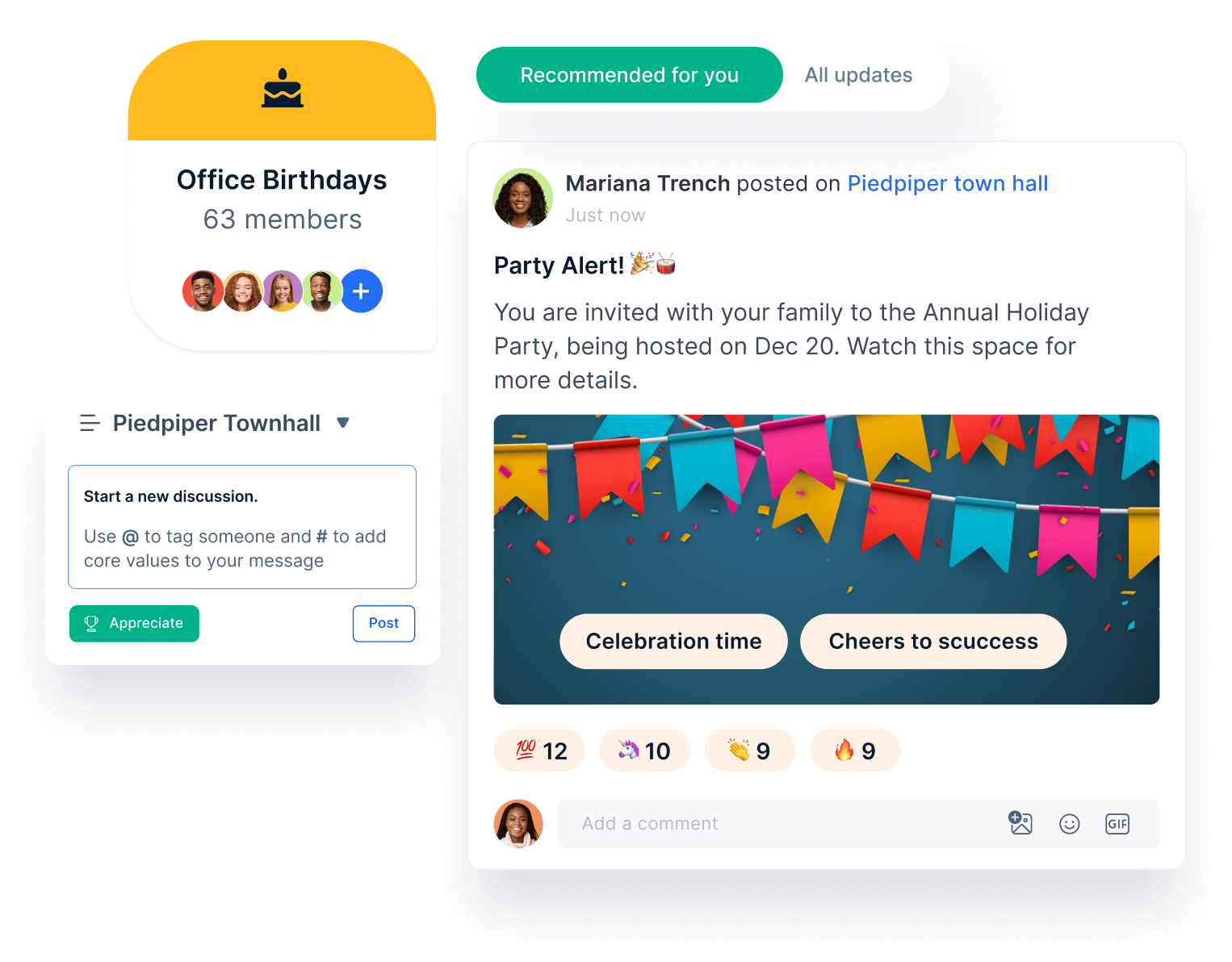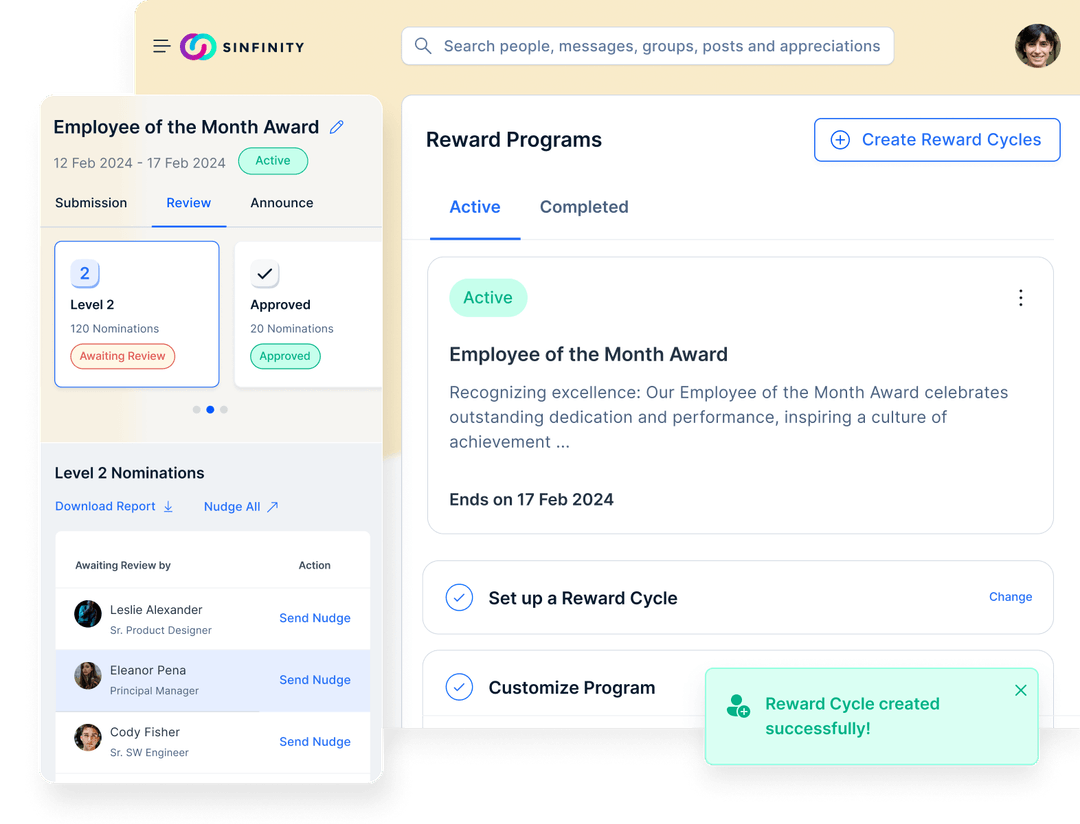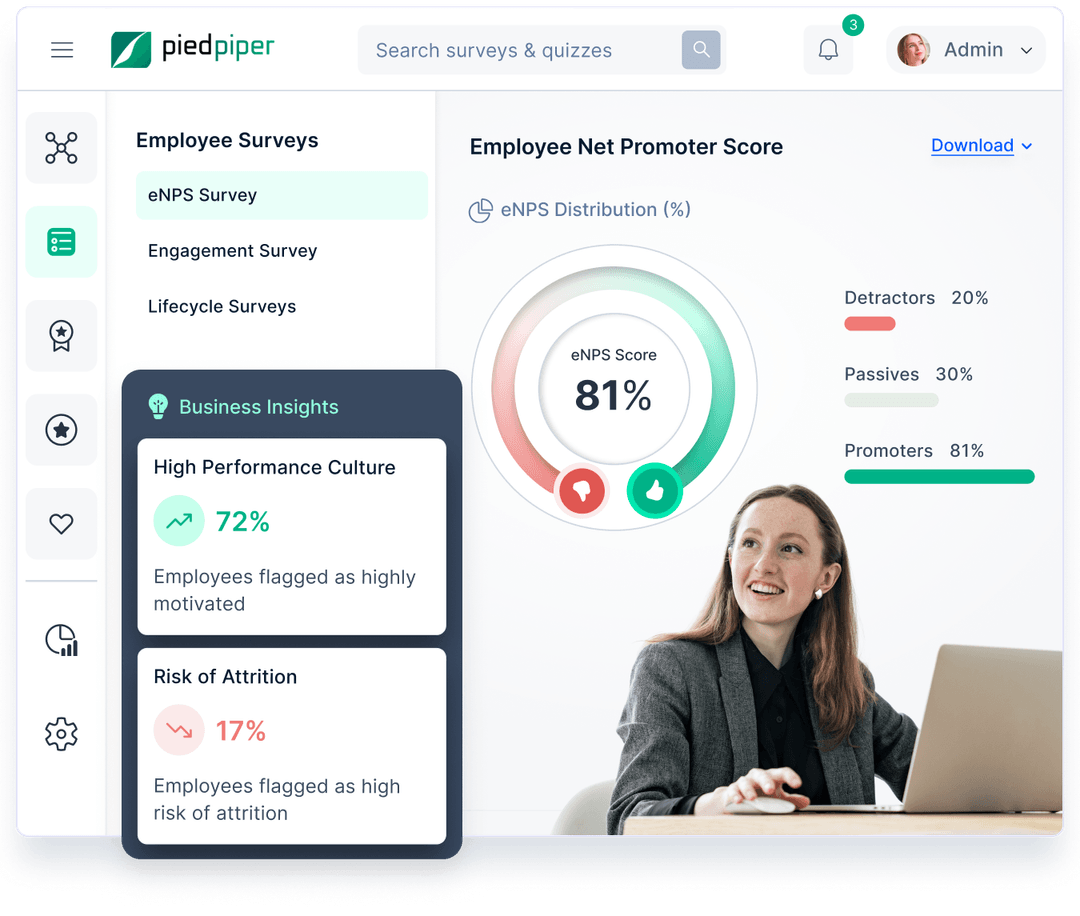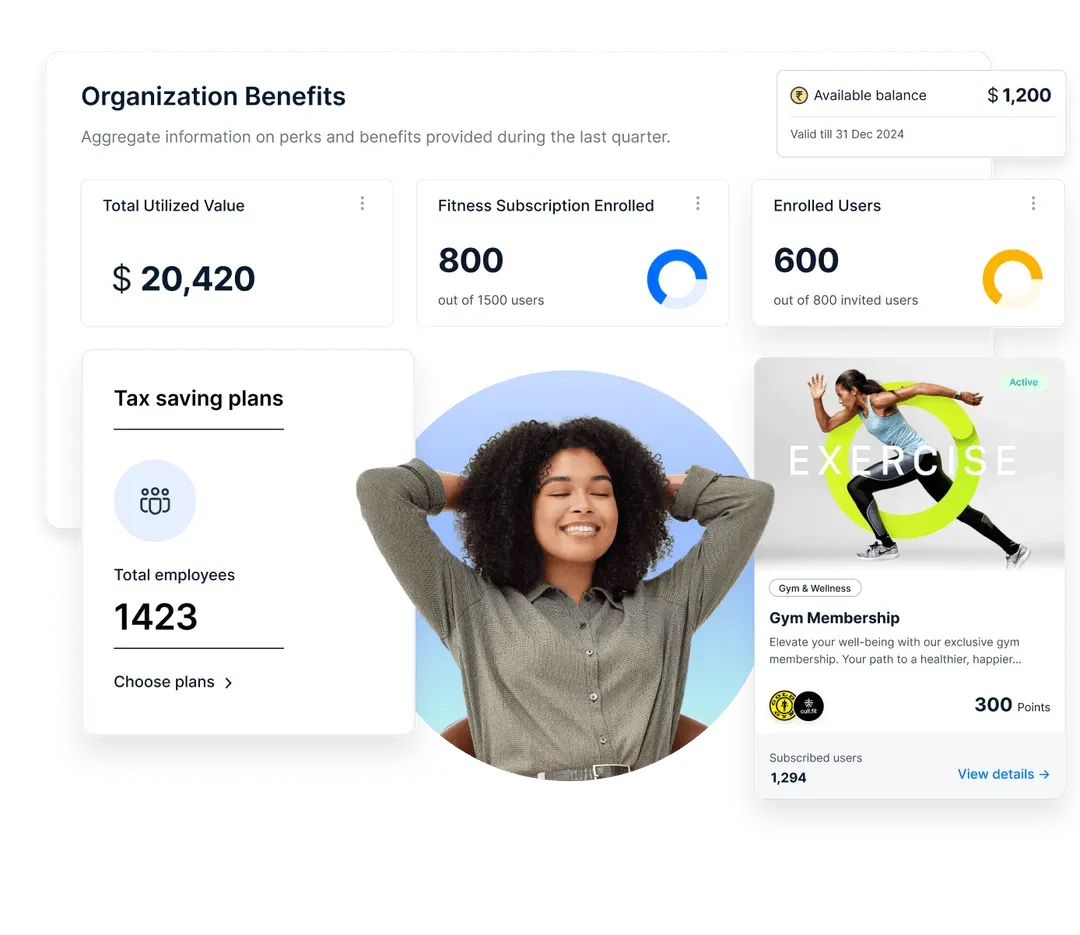15 Key Areas of Improvement for Employees in the Workplace
Explore 15 key areas of improvement for employees for their professional development. Help them identify the ones they struggle with and take action by using the strategies described.
On this page
As humans, we are hard-wired to strive for growth and improvement. Neglecting this aspect can lead to stagnation and complacency.
This statement is particularly true in the workplace, as a staggering 91% of employees want personalized and relevant training. It's a clear sign that many workers are looking for ways to improve their on-the-job performance.
There's no one-size-fits-all principle to make each employee magically develop overnight. But several areas of improvement apply to virtually every employee, regardless of their job title or industry.
In this blog post, we'll explore nine significant areas of improvement and discuss actionable steps you can take to improve your employees' workplace performance.
Why does professional improvement matter?
Professional improvement is not just a goal but a necessity. It is the key to unlocking new opportunities for personal growth and career advancement.
But why does professional improvement matter? Think about it this way: just like a car requires regular maintenance and fuel to keep running smoothly, your employees' career also needs attention and care.
Without ongoing development, employees risk falling behind in your industry. This can not only limit their career options, but also lead to burnout.
15 Key areas of improvement for employees
There is no universal areas of improvement list as each person has different areas that may require attention. However, the list below includes the most common ones that apply to most employees.
1. Leadership
Leadership is the single most important skill that separates successful employees from those who struggle to advance in their careers.
However, leadership can be a difficult trait to master. Those who are not natural-born leaders often struggle to find their footing and may even face resistance from their colleagues.
That's where you as a supervisor, come in. With the proper guidance, anyone can become a genuine leader.
Here are the tips to help an employee improve their leadership skills:
Encouraging ownership: Allow employees to take ownership of their tasks and projects. Giving them the autonomy to make decisions and learn from mistakes fosters a sense of responsibility and ownership.
Plant the seed of possibility: Inspire employees with a vision of what could be accomplished through their leadership and encourage them to believe in their capabilities to create positive and transformative change.
Provide opportunities for leadership roles: It is a great way for employees to practice and develop leadership traits by trying their hand at a new role. Encourage them to take on leadership roles in projects, teams, or committees.
Develop a leadership toolkit: Identifying an employee’s leadership stage, style and strengths can be tremendously beneficial in developing it further. Provide your employees with tools and resources that can accelerate their growth toward becoming great leaders.
Asking rhetorical questions like "What would be the outcome if you could change the world with your work?" stimulate their imaginations and encourage them to consider the possibilities.
By planting this seed of possibility in your employees' minds, they are more likely to develop a sense of purpose and strive toward creating leadership. Create seminars and training sessions where you can teach them how to:
- Motivate and communicate effectively
- Delegate tasks
- Control workflow
- Think strategically
Remember that leaders without adequate training and guidance are like builders without tools - they might still be able to build something, but it will be far from perfect.
How can Empuls help?
- Personal Recognition Assistant ("Em") nudges managers to recognize leadership behavior, promoting visibility and motivation.
- 360° Feedback Surveys allow employees to receive constructive feedback from peers and supervisors to grow into leadership roles.
2. Work Breakdown Structure (WBS)
The Work Breakdown Structure (WBS) is a project management approach that involves breaking down a complex project into smaller, more manageable tasks with predefined time frames.
Introducing this popular concept in your organization may have great benefits:
- It enhances project transparency, allowing team members to track the progress of the project and make necessary adjustments as needed.
- It ensures everyone is on the same page regarding the objectives, timeline, and resource allocation.
- With a well-structured WBS, teams can more easily identify potential risks and minimize their impact.
Here are the tips to help an employee improve their WBS skills:
Start with the basics: Before introducing your team to more complex WBS concepts: Ensure that they have a clear understanding of the fundamentals. Start by explaining what a WBS is and why it is important. Give examples of successful projects that have used a well-designed WBS.
Emphasize clarity: Encourage your team to use clear and concise language when creating WBS structures. Explain structures that are difficult to understand and can result in confusion and mistakes.
Use visual aids: Visual representations can be an effective way to communicate complex WBS structures. Use diagrams, charts, and other visual aids to help them communicate their ideas more clearly.
How can Empuls help?
- While not a WBS tool itself, Empuls integrates with project management tools and HRMS to centralize employee task visibility and team structures.
- Social Intranet can be used to share project roadmaps, timelines, and task updates.
3. Time management
Effective time management is one of the most sought-after skills in today's workforce. The ability to prioritize tasks and meet deadlines is a significant asset in employees' hands.
As an employee, it can often be challenging to manage time effectively. With busy schedules, competing priorities, endless meetings and to-do lists, it's no surprise that time management can feel impossible.
Here are the tips to help an employee improve time management skills:
Time blocking: Ask your employees to block out specific times on their calendars for focused work, meetings, and breaks. This strategy helps them visualize their schedule and prioritize their time.
Set clear expectations and deadlines:Ensure that your employees fully understand the expectations and deadlines for each task that they are assigned. This helps them stay on track and avoid procrastination.
Encourage breaks: Set your team up with a clock in clock out app. Besides tracking work hours, the tool offers other features like deadline reminders and break notifications. This will help your employees to be aware of how their time’s spent, fostering self-reflection and improving their time management skills.
Minimize meetings:Meetings can be a major time-waster. Minimize the number of meetings they attend and ask them to focus on their priorities and goals.
Pomodoro technique: This popular time management technique involves breaking down work into 25-minute intervals separated by short breaks. This technique will help your employees stay focused and boost productivity.
How can Empuls help?
- Built-in nudges and reminders help managers and employees stay on top of recognition, feedback, and milestones.
- Calendar-based automation for rewards, surveys, and celebrations helps free up time from manual processes.
4. Distractions avoidance
With the constant lure of social media notifications, emails, and phone calls, avoiding these distractions's becoming increasingly difficult. Not only do they waste precious time, but they also disrupt our focus, which can ultimately affect employees' overall performance.
Here are the tips to help employees avoid distractions.
Create a "quiet zone": Designate an area in the office that is a quiet zone. This space should be free from distractions like phones, chatter, or music. This area can be used for tasks that require deep focus and concentration.
Implement flexible working hours: Everyone's productivity levels vary throughout the day. Implementing flexible working hours allows employees to work when they are most productive. This can lead to less distraction and a higher quality of work.
Encourage healthy habits: Creating a culture of healthy living can have a positive impact on employee performance. Talk with your team members about the benefits of eating nutritious meals and exercising regularly. A healthy, well-rested employee is a more productive one.
How can Empuls help?
- Community groups and discussion forums foster focused collaboration and help reduce context-switching from platform to platform.
- Em's nudges can promote break reminders or mental wellness tips.
5. Task prioritization
Effective prioritization of duties is a critical skill that every employee should possess. With many tasks that cannot be completed within a stipulated period, prioritizing becomes paramount to job performance.
Here is how to help employees improve the task prioritization process.
Utilize the 1-3-5 rule: This rule encourages employees to tackle one big, three medium, and five small tasks daily. This will help them focus on what's important without getting bogged down by minor tasks. By utilizing effective task management software, teams can streamline their workflow, prioritize tasks, and achieve greater productivity.
Apply the “Eat the frog” technique: "Eat the frog" is another interesting technique for task prioritization. Mark Twain said, "if it's your job to eat a frog, it's best to do it first thing in the morning. And if it's your job to eat two frogs, it's best to eat the biggest first."This means tackling your most dreaded task at the beginning of your day, so it's not hanging over your head all day.
Apply the Pareto principle: A surefire method to help your employees prioritize effectively is by using the Pareto principle. This principle states that 80% of outcomes come from 20% of inputs. So, focus on the most critical 20% of tasks yielding 80% of the results. For example, if you manage a sales team, you can ask team members to spend 80% of their time prospecting and the remaining 20% making sales calls with the best leads.
Use the Eisenhower matrix: This framework helps employees categorize tasks into four quadrants: urgent/important, not urgent/important, urgent/not important, and not urgent/not important. Focus on the urgent/important tasks first, and delegate or eliminate the others.
How can Empuls help?
- Pulse surveys can assess employee workload and help managers reprioritize responsibilities based on employee feedback.
- Goal alignment communication via the intranet ensures employees are working on the right things.
6. Communication
Open and clear communication not only helps to avoid misunderstandings and conflicts, but it also helps to create a positive work environment where everyone feels heard and valued.
Despite effective communication's positive impact on productivity, it is still an area of improvement for many employees. In fact, according to a survey conducted by Fierce, 86% of employees and executives believe ineffective communication is the underlying reason for workplace failures.
Here are the tips to help employees improve their communication skills.
Foster a safe environment for feedback: Feedback is essential for growth, but it can be hard to receive. Fostering a safe environment where employees feel comfortable giving and receiving feedback can help improve communication. This means being open, honest, and respectful when giving feedback and creating a culture of trust and transparency.
Recognize the power of nonverbal communication: Communication isn't just words. Make your team aware of their nonverbal communication, such as body language, tone of voice, and facial expressions. This can help ensure that their message matches their intended tone.
Utilize role-playing exercises: By putting employees in hypothetical scenarios, they can practice effective communication in a safe and constructive environment. This helps to build confidence and allows for constructive feedback from others.
How can Empuls help?
- Social Intranet supports posts, polls, AMAs, and announcements to promote open communication.
- Feedback tools like eNPS and lifecycle surveys measure communication effectiveness across teams.
7. Listening
As Stephen Covey once said, "Most people do not listen with the intent to understand, they listen with the intent to reply."
Therefore, as managers, we must help our employees develop a culture of active listening, leading to a more fulfilling work environment.
Listening is an underestimated helpful skill in any work setting. You can effectively transfer and receive important information and build stronger relationships by fully engaging with colleagues and clients.
Simply put, the better you listen, the more informed your decisions and communication will be.
However, active listening requires more than simply sitting quietly and hearing what someone is saying. You can take several practical steps to improve employees' listening skills.
Here are the tips to help employees improve their listening skills.
Use a Tree analogy: Just as a tree needs strong roots to grow tall, employees need a strong foundation of listening skills to communicate effectively. Encourage your employees to focus on building a solid foundation by actively listening and seeking understanding before responding.
Ask open-ended questions: When giving instructions, avoid asking yes or no questions. Instead, ask open-ended questions that require your employees to think more deeply and respond with more detail. Not only does this encourage better communication, but it also helps to build a culture of collaboration and problem-solving.
Active listening exercises: Give your employees opportunities to practice their listening skills. For example, you could hold a listening exercise where one employee talks about a topic for a set amount of time, and the other employees have to summarize what they heard. In this way, they can improve listening skills, trust and teamwork.
Mirror listening: Repeat what your employees say to you, so they know you're actively paying attention. This creates mutual understanding and respect, which is important in a collaborative work environment.
Incentivize listening: Consider offering rewards for employees who show exceptional listening skills. This could be something as simple as a gift card or public recognition. By rewarding good behavior, you create an environment where listening is valued.
How can Empuls help?
Enables employee lifecycle surveys, anonymous feedback, and 360° reviews to promote active listening from leadership.
8. Conflict resolution
Workplace conflicts cost US businesses close to $359 billion every year. This staggering statistic underscores the importance of conflict resolution strategies in the workplace.
Conflict resolution is a skill that requires patience, empathy, and consistent practice. Developing these skills takes time, but it is worth all the effort as it makes our workplaces feel safer, happier, and more productive.
With different strategies and techniques, you can approach conflicts in a more positive light and solve problems with creative solutions leading to win-win outcomes.
Here is how to help employees improve conflict resolution skills.
Focus on the issue rather than the people: When dealing with conflicts, focusing on the problem at hand rather than the people involved is essential. Avoid getting personal, attacking employees' personalities, or making them feel like they are under attack.
Address problems head-on: It's essential to address issues proactively. Avoidance only delays the conflict resolution process and leaves everyone involved feeling frustrated or resentful. Instead, directly approach the problem and make sure that communication is ongoing and transparent.
Emphasize emotional intelligence: Emotional intelligence is critical when dealing with conflicts. Encourage your employees to understand their emotions and how they impact their behavior. Empathy, self-awareness, and emotional regulation are all essential components of emotional intelligence.
How can Empuls help?
- With a safe, moderated community environment, employees can raise concerns and HR can mediate more effectively.
- Surveys and sentiment analysis offer early warning signals on interpersonal friction.
9. Customer service
Customer service can make or break a company's reputation and success. As a manager, it's your responsibility to coach your team in providing excellent customer service through up-to-date call center technologies.
Interestingly, customer service skills are also vital when working with colleagues. Employees can build better working relationships and teamwork by displaying courteous and professional behavior.
Here is how to help employees improve their customer service skills.
"The 5/10 Rule" Strategy: Greet customers within five seconds of arrival and acknowledge them within ten feet of their presence. Make it a habit to greet customers smiling and engage in small talk to build rapport. Customers appreciate feeling welcome and valued.
Create customer personas: Help your team develop empathy for customers by creating fictional customer personas. This approach will give employees an understanding of their target audience. You can even make it fun by giving each persona a name and backstory.
Invest in technology: Technology can be a valuable tool to help your employees provide great customer service. Creating a client portal, Investing in chatbots, AI, and other digital solutions can streamline all processes and free up your employees to focus on more complex customer issues.
How can Empuls help?
- Recognition programs for frontline staff based on customer feedback or CSAT scores.
- Gamified leaderboards to drive customer-centric behaviors.
10. Organizational level skills
Strong organizational skills enable employees to manage tasks effectively, leading to increased productivity and reduced stress.
Following is how you help them:
Implement task management tools: Introduce digital tools that assist in organizing tasks and setting priorities.
Encourage decluttering: Promote maintaining a tidy workspace to help focus and efficiency.
Provide training on organizational techniques: Offer workshops on methods like the Eisenhower Matrix to prioritize tasks effectively.
How can Empuls help?
- Integrated platform for communication, recognition, surveys, and rewards reduces tool sprawl.
- Helps employees find everything in one place — tasks, teams, celebrations, and updates.
11. Adaptability
In a rapidly changing work environment, adaptability is crucial for employees to remain effective and responsive to new challenges.
Here is how you do it:
Expose to diverse projects: Assign tasks that require different skill sets and approaches.
Foster a growth mindset: Encourage viewing challenges as opportunities to learn and grow.
Provide change management training: Equip employees with strategies to handle transitions smoothly.
How can Empuls help?
- Data-backed insights help managers understand who is struggling with change.
- Recognition of change champions reinforces adaptive behavi
12. Creativity and innovation
Encouraging creativity leads to innovative solutions and can give the company a competitive edge.
Here is how you do it:
Create brainstorming sessions: Allocate time for teams to generate ideas without judgment.
Support risk-taking: Encourage trying new approaches, understanding that not all will succeed.
Provide diverse stimuli: Expose teams to different industries and perspectives to inspire fresh ideas.
How can Empuls help?

Social features like contests, idea boards, and hobby groups help unlock innovative ideas from every level of the organization.
13. Emotional intelligence
Emotional intelligence involves understanding and managing one's emotions and empathizing with others, leading to better workplace relationships.
Here is how you do it:
Offer self-awareness exercises: Encourage reflection on personal emotional triggers and responses.
Provide empathy training: Teach active listening and perspective-taking techniques.
Encourage feedback seeking: Promote asking for and acting on feedback regarding interpersonal interactions.
How can Empuls help?

- Recognition and appreciation features nurture a culture of empathy.
- Feedback mechanisms support emotionally intelligent conversations at work.
14. Critical thinking
Critical thinking enables employees to analyze situations objectively and make informed decisions.
Here is how you do it:
Pose challenging scenarios: Use case studies to practice analysis and decision-making.
Encourage questioning: Foster an environment where asking "why" is welcomed.
Provide problem-solving frameworks: Teach methodologies like SWOT analysis to evaluate situations systematically.
How can Empuls help?

Survey analytics and engagement insights help managers evaluate decision-making and reasoning patterns across teams.
15. Stress management
Effective stress management leads to healthier employees and a more harmonious workplace.
Here is how you do it:
Introduce mindfulness programs: Offer sessions on meditation and stress-reduction techniques.
Promote work-life balance: Encourage setting boundaries and taking regular breaks.
Provide resources: Offer access to counseling services or stress management workshops.
How can Empuls help?

- Perks & Discounts across 6000+ brands, including wellness and mindfulness tools.
- Salary Advance, fringe benefits, and wellness allowances help ease financial and emotional stress.
By focusing on these areas of improvement, organizations can enhance employee performance and create a more dynamic and resilient workforce.
Here's a visual mapping table that aligns each of the 15 key employee improvement areas with Empuls modules and features that support them. This can be used directly in presentations, proposals, or employee development strategy docs:
Visual mapping: Areas of improvement vs Empuls features
How to identify employees’ lacking areas of improvement?
Try to gain a deep understanding of each employee. This can be done through open communication, one-on-one meetings, mentorship, and performance evaluations.
This deeper understanding will help you identify areas where an employee might be struggling and where they might need additional guidance to improve.
Ask your employees questions like:
- "What areas do you feel less confident in?"
- "Are there certain tasks or assignments that you consistently struggle with?"
- "Do you feel some areas require additional training or support?"
If they still struggle with identifying lacking areas, consider seeking a mentor or coach who can guide them and help them develop a personalized improvement plan.
Remember, identifying and addressing areas for improvement is not a sign of weakness but a sign of a committed and ambitious employee who is always striving to be their best.
Final word
Investing in professional development is a wise choice for any organization that wants to improve employee performance. The organization and its employees will reap countless benefits by providing workers with opportunities to learn and develop.
Remember that professional development is a continuous journey, not a destination itself. It's not just one area of improvement that employees should work on, but it's an ongoing process of self-reflection and learning.
Take action to improve your employees' workplace performance and see its positive impact on your bottom line.


















